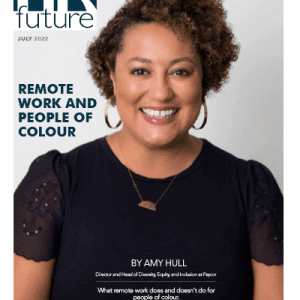From layout to lighting, every element of office design shapes the employee experience. While each piece helps complete the puzzle, perhaps none is as psychologically potent as color.
The science behind color reveals that even a simple change in paint can have a profound impact on mood, focus, collaboration, and overall workplace satisfaction. For HR professionals fostering an engaging environment, understanding the emotional and cognitive effects of color can illuminate new ways to support employee wellness.
Color as a Psychological Stimulus
Color influences human behavior on a subconscious level. It affects the brain’s neurotransmitters, triggering emotional responses that can either support or hinder performance. In an office setting, colors carry more weight than aesthetics — they shape the emotional atmosphere of a workspace.
For example, warm colors such as red, orange, and yellow are known to stimulate energy and alertness, making them effective hues in areas with heavy physical activity or collaboration. On the flip side, they can also lead to overstimulation or stress if they’re overused in high-pressure working environments.
In contrast, cool colors — such as blue, green, and violet — tend to promote calmness and concentration. These shades are especially effective in individual workspaces where task completion is the top priority.
Enhancing Focus and Performance
When picking out paint colors, the cognitive demands of different roles need to be considered. Blue, associated with intelligence and serenity, is a go-to choice for focusing on tasks that require concentration and mental strain.
Green is another productivity-booster, often linked to balance and harmony. Its connection to nature helps to reduce eye strain and mental fatigue during long hours of screen time. Accordingly, adding some verdant shades to workstations and break rooms can have a restorative effect on employee wellness.
For creative workspaces, yellow can spark innovation and optimism. However, because yellow is also the most tiring color to the eye, it should be used sparingly or in accents rather than as a dominant hue.
The Power of Personalization
No single color works universally across all office settings. Employee demographics, cultural context, and industry norms can all influence how color is perceived. For example, red might stimulate action in a sales office, but it may feel too aggressive in a healthcare or nonprofit setting.
Offering flexibility — such as accent walls or the use of color zones — can accommodate diverse teams. Seeking input and involving employees in the design process is another way to empower workers while boosting morale. Receiving a free paint color consultation helps ensure that any color changes will ultimately reflect the unique needs of the workforce.
Keeping Wellness at the Core
While strong performance is a non-negotiable for success, employee well-being is equally important. The psychological effects of color can extend to stress levels, job satisfaction, and mental health; soft neutrals and pastels can ease anxiety, while earth tones can offer a grounding effect.
Break areas, wellness rooms, and collaborative spaces offer opportunities to use color as an emotional regulation tool. Striking the right balance of color throughout an office can indicate transitions between high-focus zones and relaxation zones, supporting mental clarity and emotional resilience throughout the day.
Turning Insight Into Impact
As HR teams reimagine office design for the modern workforce, color serves as a subtle yet powerful tool. Strategic paint choices can improve focus, stimulate creativity, foster calm, and support well-being — all essential drivers of employee productivity.
Grasping the psychology of color doesn’t require a design degree, but it does demand intention. By aligning color choices with the emotional and cognitive needs of employees, HR pros can cultivate environments that are not only visually appealing but also optimized for success.
Anthony M. Salvatori is President of Steadfast Painting Solutions. He has 20 years of painting experience and has been operating his own company for nine years. Salvatori is proud to be leading such an incredible team of individuals with the common goal of providing excellent service and quality. After attending Robert Morris University’s undergrad program for Business Administration, he earned his Master of Business Administration. Salvatori began building his expertise in the painting industry at age 15 working under the mentorship of his parents in their family-owned painting business.

























